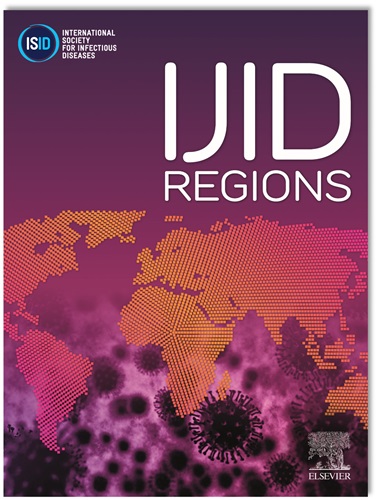2013-2022年日本引入直接作用抗病毒药物后丙型肝炎医疗负担趋势:日本国家索赔数据库研究
IF 4.3
2区 医学
Q1 INFECTIOUS DISEASES
引用次数: 0
摘要
目的:描述引入无干扰素直接作用抗病毒药物(DAAs)后慢性丙型肝炎、肝细胞癌(HCC)发病率和相关医疗负担的趋势。方法:这项重复的横断面研究(时间趋势分析)检查了慢性丙型肝炎和相关的医疗保健,包括HCC,使用的是2013 - 2022财政年度日本医疗保健服务的国家索赔数据。结果:在研究期间,357,877例患者接受了DAAs治疗。接受慢性丙型肝炎治疗的个人患病率下降了40%(95%可信区间[CI]: 40%-40%),从2013年的0.54%降至2022年的0.33%。在艾滋病毒感染者中,下降幅度较小,为16% (95% CI: 10%-20%),到2022年患病率为3.82%。新诊断HCC的年发病率下降了69% (95% CI: 68%-70%),同时HCC治疗减少。慢性丙型肝炎患者的年度医疗费用在2015年达到峰值,到2022年降至2013年水平的65%。结论:在10年DAA期间,日本丙型肝炎的医疗负担大幅下降。加强预防、筛查和治疗工作对于根除丙型肝炎至关重要,特别是在高危人群,如艾滋病毒感染者中。本文章由计算机程序翻译,如有差异,请以英文原文为准。
Trends in the healthcare burden of hepatitis C after the introduction of direct-acting antivirals in Japan, 2013-2022: A national claims database study in Japan
Objectives
To describe trends in the incidences of chronic hepatitis C, hepatocellular carcinoma (HCC), and related healthcare burden after the introduction of interferon-free direct-acting antivirals (DAAs).
Methods
This repeated cross-sectional study (time trend analysis) examined chronic hepatitis C and related healthcare, including HCC, using national claims data covering >98% of healthcare services in Japan between fiscal years 2013 and 2022.
Results
During the study period, 357,877 patients were treated with DAAs. The prevalence of individuals receiving care for chronic hepatitis C decreased by 40% (95% confidence interval [CI]: 40-40%), from 0.54% in 2013 to 0.33% in 2022. Among individuals with HIV, the reduction was smaller, at 16% (95% CI: 10-20%), with a prevalence of 3.82% in 2022. The annual incidence of newly diagnosed HCC decreased by 69% (95% CI: 68-70%), accompanied by a reduction in HCC treatments. Annual healthcare costs for individuals with chronic hepatitis C peaked in 2015 and decreased to 65% of 2013 levels by 2022.
Conclusion
During the 10-y DAA era, the healthcare burden of hepatitis C declined substantially in Japan. Enhanced efforts in prevention, screening, and treatment are critical for the eradication of hepatitis C, particularly among high-risk populations, such as individuals with HIV.
求助全文
通过发布文献求助,成功后即可免费获取论文全文。
去求助
来源期刊
CiteScore
18.90
自引率
2.40%
发文量
1020
审稿时长
30 days
期刊介绍:
International Journal of Infectious Diseases (IJID)
Publisher: International Society for Infectious Diseases
Publication Frequency: Monthly
Type: Peer-reviewed, Open Access
Scope:
Publishes original clinical and laboratory-based research.
Reports clinical trials, reviews, and some case reports.
Focuses on epidemiology, clinical diagnosis, treatment, and control of infectious diseases.
Emphasizes diseases common in under-resourced countries.

 求助内容:
求助内容: 应助结果提醒方式:
应助结果提醒方式:


